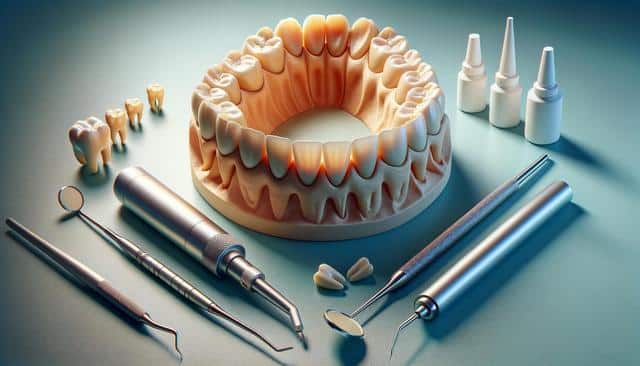Understanding Dental Bridges
Dental bridges are a popular restorative dentistry solution designed to replace missing teeth and restore both function and aesthetics. They literally bridge the gap created by one or more missing teeth. A typical dental bridge consists of two or more crowns on either side of the gap, which are known as abutment teeth, and a false tooth or teeth in between. These false teeth, called pontics, are usually made from porcelain, alloys, gold, or a combination of these materials. Dental bridges can help maintain the shape of your face, prevent remaining teeth from drifting out of position, and improve your ability to chew and speak properly.
Types of Dental Bridges
When considering a dental bridge, it’s essential to understand the different types available to determine which is the most suitable for your needs. There are four main types of dental bridges:
- Traditional Bridges: These are the most common type, consisting of a pontic held in place by dental crowns cemented onto each of the abutment teeth.
- Cantilever Bridges: Used when there are adjacent teeth on only one side of the missing tooth or teeth. This type is less common today and is not recommended for use in the back of the mouth.
- Maryland Bonded Bridges: Also known as a resin-bonded bridge, this type uses a metal or porcelain framework bonded onto the backs of the abutment teeth.
- Implant-Supported Bridges: As the name suggests, these bridges are supported by dental implants rather than crowns or frameworks. This is often used when more than one tooth is missing.
The Process of Getting a Dental Bridge
The process of getting a dental bridge typically involves multiple visits to the dentist. During the initial visit, the abutment teeth are prepared. This involves recontouring these teeth by removing a portion of enamel to allow room for a crown to be placed over them. Impressions of your teeth are then made, which serve as a model from which the bridge, pontic, and crowns will be made by a dental lab. You’ll typically receive a temporary bridge to wear while your permanent bridge is being made. In a subsequent visit, your temporary bridge will be removed, and the new bridge will be adjusted and checked for fit. Depending on your dentist’s recommendation, the bridge may be cemented temporarily for a few weeks to ensure it fits properly before being permanently cemented.
Benefits of Dental Bridges
Dental bridges offer a range of benefits beyond simply improving the appearance of your smile. These include:
- Restored Functionality: By replacing missing teeth, dental bridges restore your ability to chew food more effectively and speak clearly.
- Improved Aesthetics: They can enhance your smile and create a more uniform appearance, boosting your self-confidence.
- Maintained Facial Structure: Dental bridges help maintain the shape of your face, preventing sunken cheeks that can result from missing teeth.
- Preventing Teeth Shifting: Bridges help keep your remaining teeth in place, preventing them from shifting into the empty space and causing bite issues.
Caring for Your Dental Bridge
Proper care and maintenance are crucial to ensure the longevity and effectiveness of your dental bridge. Here are some tips to keep your bridge in top condition:
- Maintain Good Oral Hygiene: Brush your teeth twice a day and floss daily. Be sure to clean under the pontic using special dental floss or a water flosser to prevent decay and gum disease.
- Regular Dental Checkups: Visit your dentist regularly for checkups and cleanings to monitor the health of your bridge and surrounding teeth.
- Avoid Hard Foods: Be cautious with hard or sticky foods, which can damage the bridge or loosen it over time.
- Use a Mouthguard: If you grind your teeth at night or play contact sports, consider using a mouthguard to protect your bridge and natural teeth.
Conclusion
Dental bridges are an exceptional solution for those looking to restore their smile and regain confidence in their daily interactions. By understanding the types and benefits of dental bridges, as well as the process involved and necessary care, you can make an informed decision about whether this restorative option is right for you. With the right dental bridge, you can enjoy improved oral health, functionality, and a more radiant smile.
